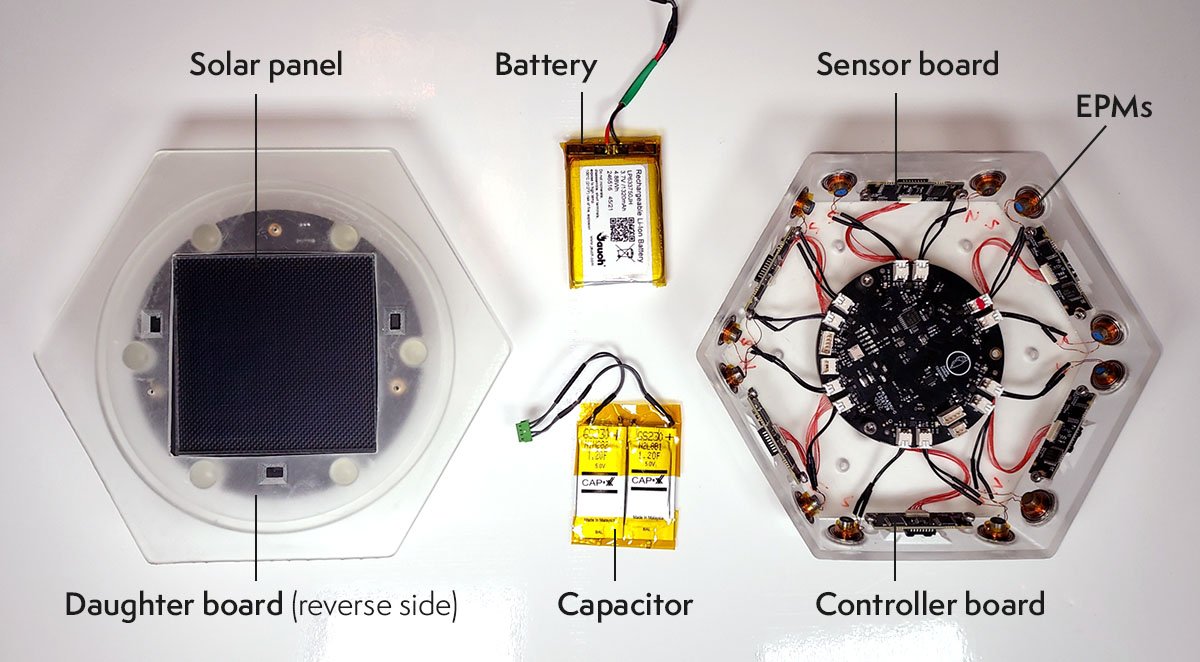Experimenting in microgravity: TESSERAE Gen 4
We tested out the latest iterations of our hardware and software on a parabolic flight
Photo credit: Steve Boxall/ZERO-G Corp
A few weeks ago the Aurelia team lifted off on a parabolic flight to test out the latest deployment of our TESSERAE self-assembling architecture prototype.
If you’ve been following us from the beginning, you’ll be familiar with TESSERAE (Tessellated Electromagnetic Space Structures for the Exploration of Reconfigurable, Adaptive Environments), Aurelia Institute's first test case for a new method of reconfigurable space habitation for the post-ISS era. Begun as CEO Ariel Ekblaw’s PhD thesis at MIT, Aurelia Institute is now building and testing the TESSERAE hardware platform toward a future crewed habitat mission.
Since our last flight deployment—a 10-day experiment aboard the ISS, part of the historic Ax-1 mission—our interdisciplinary team has been hard at work analyzing the data from those experiment results and iterating on the design, technology, and hardware.
Flight Team
Sean Auffinger - Mission integrator, responsible for interfacing with zero-g, paperwork/documentation, on site logistics
Che-Wei Wang - Senior design engineer, responsible for design and fabrication of the tile dispensers and conducting one of the flight experiments.
Annika Rollock, PhD - Director of engineering, responsible for conducting and overseeing one of the flight experiments.
Evan Hilgemann - Senior mechanical engineer, responsible for design, fabrication, and operation of the zero g experiments.
“Maybe it's because I scuba dive, but the zero-g feeling wasn't as much of a shock as I expected. I definitely floundered a bit right out of the gate, but after the first few parabolas I was able to navigate around the cabin upside down and conduct our experiment,” says first-time flier Annika. “The hardest part was making sure you weren't underneath anyone when it was time to come down!”
Photo credit: Steve Boxall/ZERO-G Corp
Gen 4 Tile
The Gen 4 tile deployment is meant to test out the latest and greatest tile technology in preparation for the next mission on the ISS, which will use similar hardware. Major differences in this iteration compared to previous include:
a larger tile size to accommodate new features and hardware. The previous version of the tiles were about 3.75” across and 0.75” thick, while the new tiles are a little over 6” across and 1” thick;
electropermanent magnets mounted inside the bearings to allow the system to better manage self-assembly in different conditions;
improved algorithmic design for autonomous self-assembly;
various software upgrades including better sensor thresholding to detect tiles that have bonded incorrectly;
modifications to the physical shell to improve bonding reconfigurability.
This experiment package also included a new design for dispensers, which release the tiles one by one into the experiment volume—think of a giant Pez dispenser but for TESSERAE tiles! This was our first chance to test the new hardware; similar dispensers will also be used on the next ISS flight.
These miniature tiles are designed as a test platform as we prepare for larger, human-scale work. Each one was 3D-printed using a method called stereolithography (SLA), wherein a laser beam solidifies liquid resin into solid geometries, then washed in a tank of isopropyl alcohol and cured via exposure to UV light. Access to state-of-the-art 3D printing technology is a key benefit of our residency with the Autodesk Technology Center.
Control of the tiles is mediated by a controller board, which has the ability to fire electro permanent magnets (EPMs) based on input from sensors on the various sensor boards. When activated, the EPMs receive a strong pulse of electricity from a super-capacitor. Electrical power is provided by an onboard battery, which can be recharged in flight using a solar panel, itself mounted to a daughter board.
Looking Forward
Aurelia has another parabolic flight opportunity scheduled for May, when the team will test similar tiles with upgraded software and electronics based on lessons learned from this flight. We’ll also test the tiles in a larger space and perform some tests we weren’t able to complete during this iteration. Longer term, the team is starting to develop a new generation of tiles with a focus on sensing systems that are specifically needed for a full-scale future deployment.






